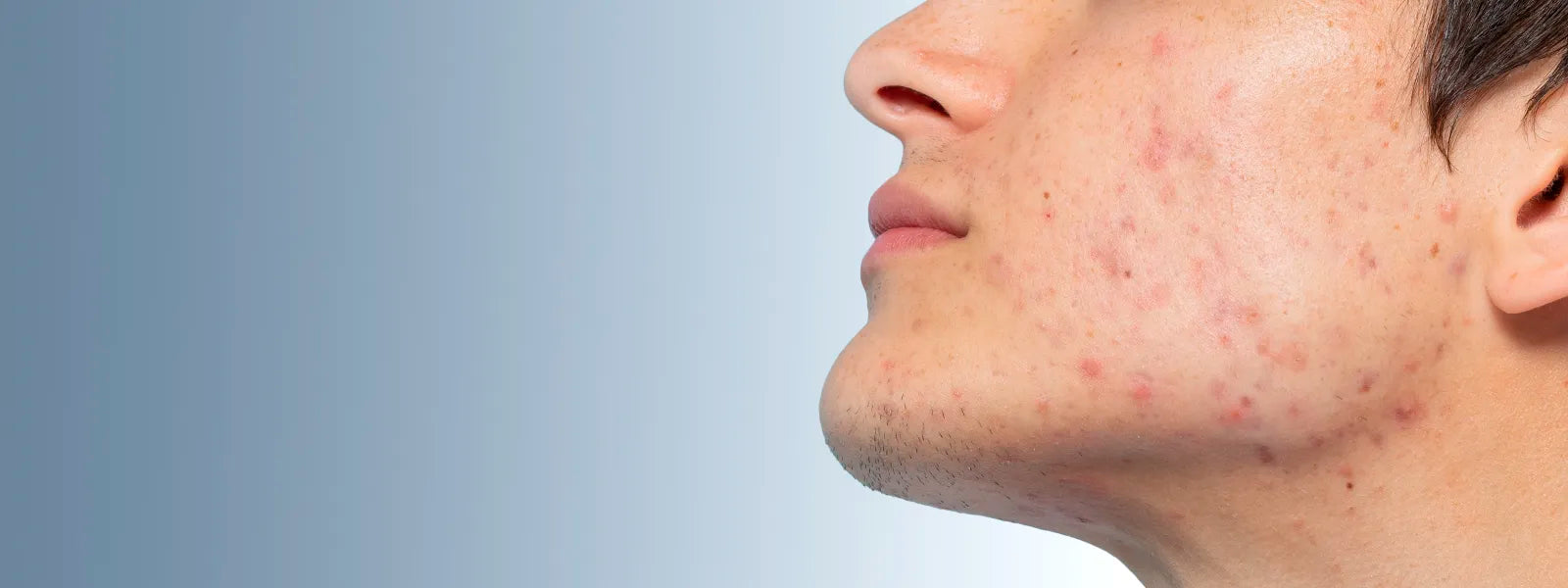Skin blemishes are common imperfections that can appear on the face and body. They can vary in appearance, from small, red pimples to larger, painful cysts. Blemishes are often a result of clogged pores, excess oil, bacteria, and dead skin cells and form on the surface of the skin. While they are usually not a serious, they can be distressing. They are among the most common skin conditions. While everyone develops blemishes at some point in their lifetime, there are steps one can take to prevent and care for blemishes.
What Are Skin Blemishes?
Skin blemishes are common imperfections that can appear on the face and body. They can vary in appearance, from small, red pimples to larger, painful cysts. Blemishes are often a result of clogged pores, excess oil, bacteria, and dead skin cells. While they are not usually a serious medical condition, they can be distressing and affect self-esteem.
What Are Different Types Of Blemishes?
Blemishes come in several forms, each different type of skin blemish with its characteristics:
- Pimples are small, red spots that may have a white tip.
- Blackheads appear as open pores clogged with dead skin cells and sebum that oxidize and turn black.
- Whiteheads are closed pores filled with dead skin cells and sebum.
- Cysts are large, painful, pus-filled lumps under the skin.
- Nodules are hard lumps under the skin that can be painful.
- Papules are small, red, raised bumps caused by inflamed or infected hair follicles.
How Do Blemishes Form?
Blemishes begin their journey in the hair follicles, which are small sacs in the skin from which hair grows. These follicles also contain sebaceous glands that produce sebum, an oily substance that helps lubricate and protect the skin. Under normal circumstances, sebum travels up the hair follicle and onto the skin's surface, where it forms a protective barrier.
Problems arise when there is an overproduction of sebum. Excess oil can mix with dead skin cells, which are naturally shed from the surface of the skin. This mixture can clog the hair follicles, creating an environment conducive to the formation of various types of lesions.
Excess oil production, often triggered by hormonal changes, particularly during puberty, can increase sebum production. Dead skin cells can accumulate on the skin's surface and mix with sebum, leading to clogged pores and breakouts.
Why Do Some Blemishes Leave Scars?
Not all blemishes leave scars, but when they do, it's often due to the severity of the blemish and the skin's healing response. Severe inflammation can damage the surrounding skin tissue. Picking and squeezing blemishes can push bacteria deeper into the skin, increasing the risk of scarring. Some skin types are more prone to scarring due to their healing process, and not treating severe blemishes promptly can lead to deeper skin damage and acne scars.
How To Prevent Blemishes
Preventing blemishes involves a combination of good skin care practices and lifestyle changes. Using a gentle, oil-free cleanser twice daily can help remove dirt, oil, and makeup, avoiding harsh scrubbing, which can irritate the skin and worsen blemishes. Choosing a non-comedogenic moisturizer can keep your skin hydrated without clogging pores.
Regular exfoliation is crucial to remove dead skin cells. Products containing salicylic acid can help unclog pores and prevent breakouts. Benzoyl peroxide creams or gels can kill bacteria and reduce inflammation, and it's best to start with a lower concentration to avoid irritation.
Sun protection is also essential. Applying sunscreen daily protects your skin from UV damage, which can worsen blemishes and lead to dark spots. An oil-free, non-comedogenic sunscreen is a good choice.
Maintaining a healthy diet rich in fruits, vegetables, and lean proteins can also make a difference. Avoid high-glycemic foods, which can increase blood sugar levels and trigger breakouts. Staying hydrated by drinking plenty of water helps keep your skin hydrated and flushes out toxins.
Managing stress is important as well. Practicing stress-reducing techniques such as yoga, meditation, or deep breathing exercises can prevent hormonal changes that lead to breakouts. Avoid touching your face to prevent the transfer of oil and bacteria.
Additionally there are a number of effective home remedies for skin blemishes including aloe vera, apple cider vinegar, and tea tree oil.
Consistency is key. Sticking to a regular skin care routine tailored to your skin type and concerns is crucial. If you need personalized recommendations, consult a dermatologist.
How To Get Rid Of Blemishes
If you already have blemishes, several treatments can help reduce their appearance and prevent new ones from forming. Over-the-counter treatments containing benzoyl peroxide or salicylic acid can reduce inflammation and unclog pores. For severe acne, a dermatologist may prescribe topical retinoids, antibiotics, or oral medications to control breakouts.
Spot treatments can be applied directly to blemishes to reduce their size and redness. Look for products with benzoyl peroxide, salicylic acid, or sulfur. Professional treatments such as chemical peels, microdermabrasion, or laser therapy can reduce the appearance of blemishes and improve skin texture.
Maintaining a healthy lifestyle with a balanced diet, regular exercise, and adequate sleep supports overall skin health. Keeping your skin hydrated with non-comedogenic moisturizers and drinking plenty of water is essential.
Gentle skin care is important. Avoid harsh skin care products that can irritate your skin and worsen blemishes. Stick to gentle, fragrance-free options. Finally, resist the urge to pick or squeeze blemishes, as this can lead to scarring and further inflammation.
If you continue to struggle with breakouts, consult a dermatologist for personalized advice and treatment options.
Sources:
https://www.healthline.com/health/what-are-blemishes
https://www.healthline.com/health/beauty-skin-care/how-do-pimples-form
https://www.aad.org/types-of-breakouts/
https://www.medicalnewstoday.com/articles/327503


Leave a comment (all fields required)